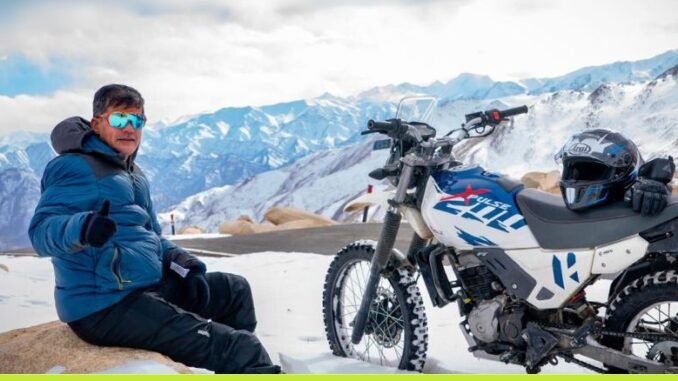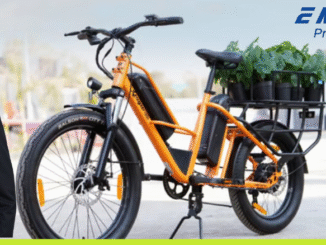
Sanjay Tripathi, a veteran of India’s motorcycle industry, has been instrumental in shaping some of the country’s most iconic bikes, from the Yamaha R15 to the Royal Enfield Himalayan and Continental GT 650. Today, as India accelerates toward an electric future, Tripathi’s unique perspective bridges heritage engineering with the demands of modern sustainability. In this exclusive interview, he shares his roadmap for building not just electric vehicles, but lasting communities, robust designs, and brands that inspire trust and loyalty in a rapidly evolving market.
Honoring the Past, Reimagining Sustainability
Tripathi’s journey is rooted in his beloved Yamaha RX100, which he sold in 1999 to fund his MBA. Seventeen years later, he tracked down the buyer and meticulously rebuilt it, though regulations now keep the two-stroke bike off the road. For Tripathi, this restoration is more than nostalgia—it’s a guiding philosophy.
“Great engineering is timeless, and sustainability isn’t about discarding the past—it’s about reimagining it,” he says. At Harley-Davidson, where he observed the LiveWire project, this ethos was evident: the LiveWire S2 Mulholland used 30% recycled ocean plastics and committed to a 2035 net-zero pledge. “Legacy brands don’t need to shout ‘green’—trust is earned over decades. Startups must learn: sustainability is a mindset, not a marketing checkbox.”
Building Communities Beyond the Commute
Tripathi’s creation of Harley Rock Riders—a blend of motorcycle culture and rock concerts—built a 50,000-strong rider community. “Harley Rock Riders wasn’t about bikes—it was about identity,” he explains. He believes EVs must transcend their “commuter” image by creating meaningful experiences. While startups like Ultraviolette tout the F77 Mach 2’s 155 km/h top speed, Tripathi asks, “Where’s its Woodstock?” He points to Royal Enfield’s electric Himalayan, which completed a 1,200 km journey in Spiti Valley, as proof that legacy brands know how to infuse soul into electrification. “Startups should focus on experiences, not specs: imagine silent EVs charging campfire sound systems on Ladakh trails.”
Designing for India: Beyond the Spec Sheet
Drawing from his experience with the Himalayan, Continental GT 650, and Meteor 650, Tripathi criticizes the trend of designing EVs in insulated environments. “The Himalayan’s 220 mm ground clearance wasn’t a spreadsheet decision—it was forged in Ladakh’s -20°C winters. Most EVs? Designed in AC offices.” He warns that startups often lack comprehensive product planning. “They put too many features in the instrument cluster,” he says. “People riding on Indian roads don’t keep an eye on the instrument cluster all the time—they have to see what’s happening ahead. It’s dangerous riding a two-wheeler if you keep your eyes on music players or call notifications.”
While Oben gets it right with the Rorr’s 200 mm clearance, many startups prioritize urban specs over terrain demands. “India isn’t Europe: our potholes demand rugged suspensions, and highways need 300-km ranges.”
What Will Make Riders Switch to Electric?
As a Ducati owner and enthusiast, Tripathi identifies three critical gaps in today’s EVs. First is sound—while Harley’s LiveWire “hums like a spaceship,” he misses the distinctive Ducati growl. Second is modularity for long journeys like Delhi-Leh without charging anxiety. Third is aesthetics—he wants BMW’s S1000RR design philosophy in electric form.
Legacy brands hold advantages here. Bajaj’s Chetak EV, with its 153 km range, leverages five decades of trust, while Royal Enfield’s 1,800+ service centers dwarf Ultraviolette’s three hubs. “Riders don’t fall for specs—they fall for stories,” Tripathi observes.
The Reality Check for Startups
Sales data reveals legacy brands—Bajaj, TVS, Hero, Honda, and Suzuki—are overtaking startups in the EV race. “If startups don’t buckle up and get the right people with the right strategy, they’ll be in trouble,” Tripathi warns. “The trust factor and after-sales service that legacy brands offer—startups are nowhere near it.”
His advice is direct: respect legacy by partnering with mentors like Hero’s support of Ather, hire wisely by mixing experienced engineers with young designers, and think long-term—the Himalayan took four years to develop.






